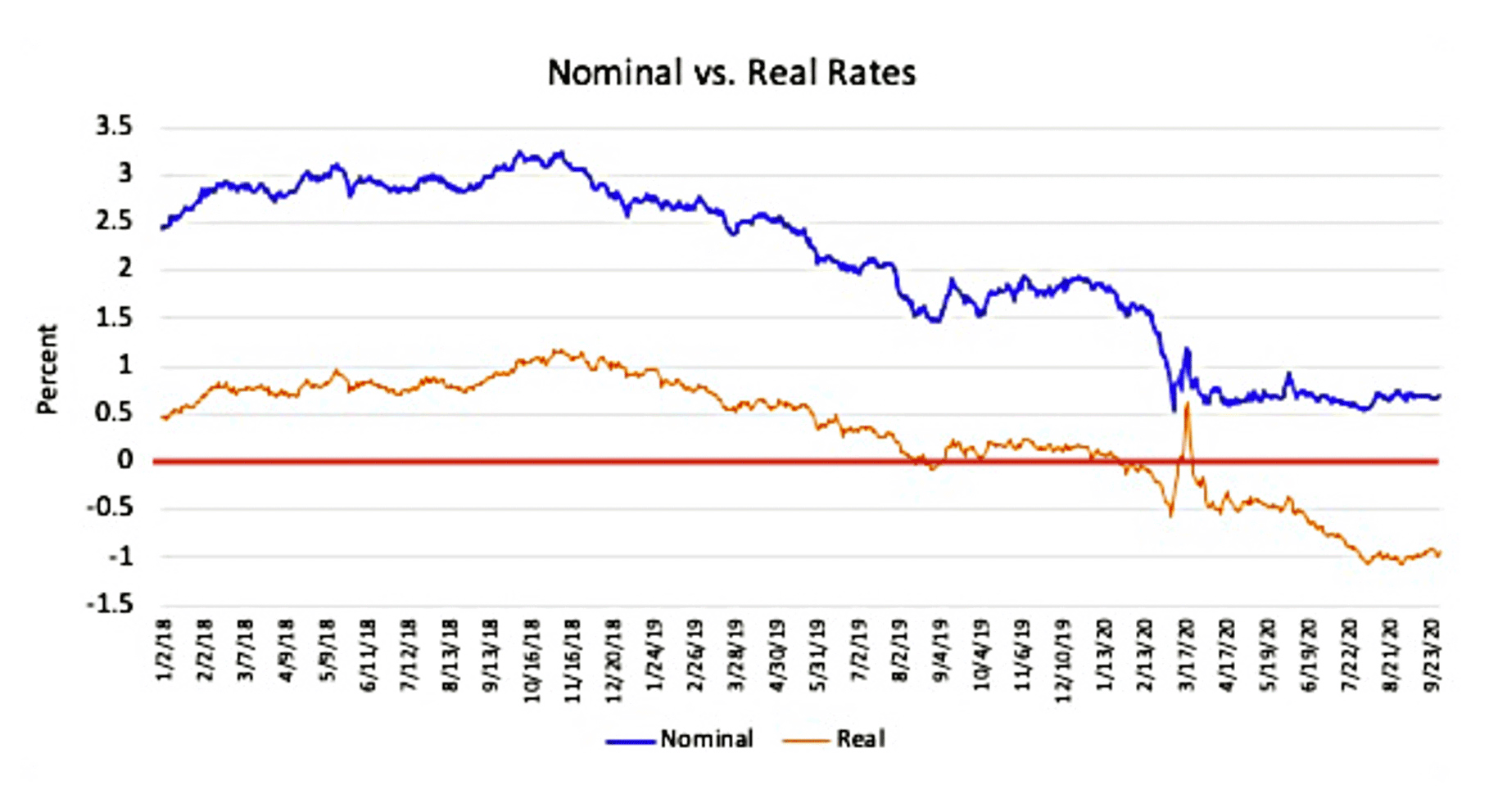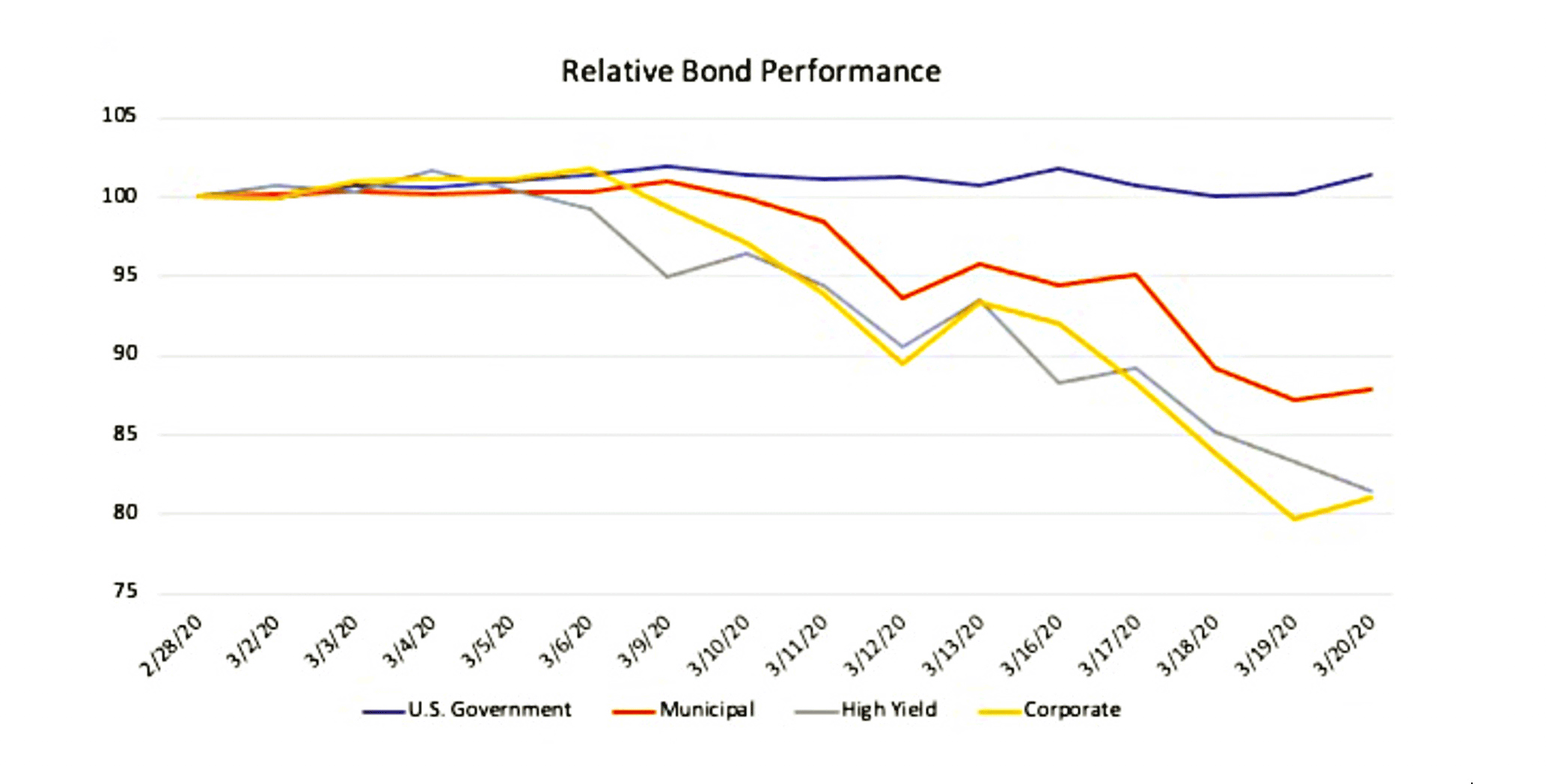Don’t Bank on the Safety of Bonds in a Pandemic
Bond yields are too low to follow the old investing playbook. Here are some tips to restructure the bond side of your portfolio today.


Today’s market environment requires that we talk candidly about bonds. While investors over the years have turned to bonds for safety, unfortunately they’ve never been riskier than they are right now.
Over long periods of time, bonds have generated lower returns and lower risk than equities. Bonds also had low correlation with equities, which generates diversification return. Generally, bonds are thought of as safe. Over the last 50 or so years, the 10-year U.S. government bond has produced average annual returns of around 7%.
Ah, the good old days. If you purchased a 10-year U.S. government bond on Oct. 1, 2020, the bond would have yielded 0.68%. In other words, over the next 10 years you would expect to get an average annual return of 0.68%. That’s about 90% less than the average returns over the past 50 years. It’s also pretty close to zero.
From just $107.88 $24.99 for Kiplinger Personal Finance
Become a smarter, better informed investor. Subscribe from just $107.88 $24.99, plus get up to 4 Special Issues

Sign up for Kiplinger’s Free Newsletters
Profit and prosper with the best of expert advice on investing, taxes, retirement, personal finance and more - straight to your e-mail.
Profit and prosper with the best of expert advice - straight to your e-mail.
At the beginning of this year, the U.S. bond yielded 1.88%. Year to date those same bonds have delivered total returns of around 7%. How? Well, the yield went down from 1.88% to 0.68%. When the yield goes down, the price of the bond goes up, and vice versa: When rates rise, bonds fall in price.
So, the yield is 0.68%. If you buy a bond for $100, and you get a 0.68% return for a year, you then will have $100.68. But did you really make money? There is a concept called “real return,” which takes the effect of inflation into account. If inflation were zero, then yes, you made 68 cents. But what if inflation were 1.8%, as it was in 2019? Well, the $100 would only be worth $98.88. You would have lost purchasing power.
Where do we stand today, not only with nominal rates, but real rates? Certainly negative! Below is the yield on the 10-year bond since 2018, as well as the real rate of return. The orange line indicates the real rates bond holders have been seeing, and the dark red line delineates between positive and negative returns.

So, an owner of a U.S. government bond can expect to lose purchasing power. And the nominal yield of 0.68% is near the lowest on record. If rates and inflation stay where they are, U.S. bonds are likely to be a poor investment. If inflation rears its head within a decade, they are likely to be very harmful to our purchasing power. The same remains true if rates rise over the decade. Low upside, large downside. It seems that bonds have never in history been as risky as they are today.
We say, “No thanks.”
What to Do? In the Face of Uncertainty, Diversify
If you asked me a few years ago whether we would have all-time-low nominal rates, negative real rates, along with exploding government debt, I would have thought it unlikely. That scenario never happened before, and it is tough to figure out why investors would accept those conditions rather than move their wealth into other assets. Plain, old U.S. government bonds are unappealing (another word for “risky”). Since yields on developed international bonds are no better, international bonds, when denominated in U.S. dollars, are unappealing as well.
If we are unlikely to make money from owning plain old U.S. government bonds, what can we do? Diversify. If we buy international bonds (with comparably low yields) denominated in international currencies, and if the value of the dollar drops, these bonds may rise. The same goes for emerging market bonds, which have the added benefit of higher yields. How about inflation-adjusted bonds? If inflation rises, these bonds may do well. Floating rate bonds may benefit if rates rise. The time for a plain old U.S. bond portfolio is gone (not that we had one of those portfolios before). When I discuss bonds with colleagues in the industry, the prevailing answer is “we are just holding our nose and keeping the same portfolio as before.” I find that unacceptable.
As such, the composition of your bond portfolio should be changing just as dramatically as yields have changed. All of these sources of diversification should be considered. Changing times require a new game plan.
- Underweight traditional U.S. government bonds.
- Overweight inflation-protected bonds like TIP for U.S. bonds and WIP for international bonds. Floating rate bonds like USFR. International currency bonds like BWX for developed markets and EMLC for emerging markets.
- Take a higher cash position. At least cash won’t lose value if rates rise.
Why You Shouldn’t Reach for Yield
To paraphrase Warren Buffett, we have to run the conservative side of the portfolio so that every check clears under any circumstance. Thus, you might want to consider only owning government bonds (both U.S. and international) in the bond section of your portfolio. What about corporate bonds or high-yield bonds or municipal bonds? The value of a bond is directly tied to its safety. In times of stress, safety — or lack thereof — is revealed. The chart below shows the performance of different types of bonds during the most recent time of stress, March 2020.

During just this three-week period, when people were most worried about the value of their investments, municipal bonds lost 13%, high-yield bonds lost 19%, and corporate bonds lost 20%. Granted, they have recovered most of their losses since then. This time around. The next scare … who knows? I recommend sticking with government bonds of various varieties.
Profit and prosper with the best of Kiplinger's advice on investing, taxes, retirement, personal finance and much more. Delivered daily. Enter your email in the box and click Sign Me Up.

Randy Kurtz, RIA, CFP®, is a nationally recognized expert on risk. Challenging the financial industry's status quo for over a decade, Kurtz feels the standard Wall Street portfolio comes with far more risk than clients realize. He created a method of investing that aims to lower excess risk taken in client portfolios, without reducing expected return. His goal is to transform the industry by turning the client-adviser relationship from a return-centered conversation to a risk-centered one.
-
 Changes Are Coming for This Invesco Bond Fund
Changes Are Coming for This Invesco Bond FundThe Invesco BulletShares 2026 Corporate Bond ETF's bonds will mature in 2026. Here's what investors should do.
-
 What Science Reveals About Money and a Happy Retirement
What Science Reveals About Money and a Happy RetirementWhether you’re still planning or already retired, these research-based insights point the way to your best post-work life.
-
 7 Retirement Planning Trends: What They Mean for You in 2026
7 Retirement Planning Trends: What They Mean for You in 2026From government shutdowns to market swings, the past 12 months have been nothing if not eventful. The key trends can help you improve your own financial plan.
-
 7 Retirement Planning Trends in 2025: What They Mean for Your Wealth in 2026
7 Retirement Planning Trends in 2025: What They Mean for Your Wealth in 2026From government shutdowns to market swings, the past 12 months have been nothing if not eventful. The key trends can help you improve your own financial plan.
-
 What Defines Wealth: Soul or Silver? Good King Wenceslas' Enduring Legacy in the Snow
What Defines Wealth: Soul or Silver? Good King Wenceslas' Enduring Legacy in the SnowThe tale of Good King Wenceslas shows that true wealth is built through generosity, relationships and the courage to act kindly no matter what.
-
 An Investing Pro's 5 Moves to Help Ensure 2025's Banner Year in the Markets Continues to Work Hard for You in 2026
An Investing Pro's 5 Moves to Help Ensure 2025's Banner Year in the Markets Continues to Work Hard for You in 2026After a strong 2025 in the stock market, be strategic by rebalancing, re-investing with a clear purpose and keeping a disciplined focus on your long-term goals.
-
 Introducing Your CD's Edgier Cousin: The Market-Linked CD
Introducing Your CD's Edgier Cousin: The Market-Linked CDTraditional CDs are a safe option for savers, but they don't always beat inflation. Should you try their counterparts, market-linked CDs, for better returns?
-
 How to Protect Yourself and Others From a Troubled Adult Child: A Lesson from Real Life
How to Protect Yourself and Others From a Troubled Adult Child: A Lesson from Real LifeThis case of a violent adult son whose parents are in denial is an example of the extreme risks some parents face if they neglect essential safety precautions.
-
 To Build Client Relationships That Last, Embrace Simplicity
To Build Client Relationships That Last, Embrace SimplicityAs more automation becomes the norm, you can distinguish yourself as a financial professional by using technology wisely and prioritizing personal touches.
-
 Client Demand Is Forcing Financial Advisers to Specialize: How to Deliver
Client Demand Is Forcing Financial Advisers to Specialize: How to DeliverThe complexity of wealthy clients' needs — combined with AI and consumer demand — suggests the future of financial planning belongs to specialized experts.
-
 A Financial Planner Takes a Deep Dive Into How Charitable Trusts Benefit You and Your Favorite Charities
A Financial Planner Takes a Deep Dive Into How Charitable Trusts Benefit You and Your Favorite CharitiesThese dual-purpose tools let affluent families combine philanthropic goals with advanced tax planning to generate income, reduce estate taxes and preserve wealth.